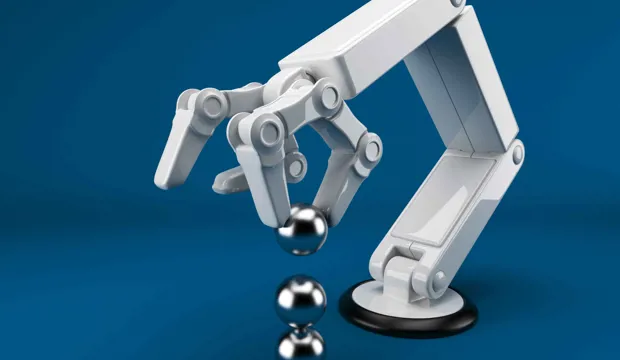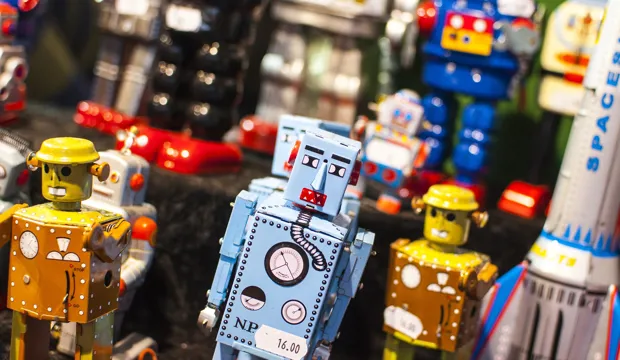
Human robotic arm design
Exploring the movement of a human arm for robotics design
This is an engaging starter activity in which students examine how human arms move. Learners will also discover how this movement can be replicated with a mechanical arm using a smart material. Students can then subsequently use this information to support the design of a robot arm.
This lesson can be followed by 3D modelling, which looks at designing and modelling a 3D robot arm and build a robot arm, which looks at how to make a robot arm with carboard.
It’s one of a set of resources developed to aid the teaching of the secondary national curriculum, particularly KS3, supporting the teaching in science (specifically biology), engineering and design & technology (D&T).
Activity: Exploring the movement of a human arm for robotics design
By examining the movement of their own arms, students will learn how robot arms might be designed and how smart materials can play a role.
Students will first bend their arms and be asked to monitor and describe the mechanics involved (muscles, joints, etc.). They will then consider how this natural bending motion can inspire the design of robot arms. Learns will be introduced to shape memory alloy (SMA) springs, which can be deformed or stretched and then revert back to their original shape when heated (this can be achieved using an electrical current).
Finally, students will be tasked with explaining how SMAs could be used to create movement in a robot arm.
Download our activity overview for a detailed lesson plan on the movement of a human arm.
The engineering context
Robot arms are an example of a programmable system. They are used in a wide variety of industrial applications, ranging from assembling cars to spray-painting products. They’re also used in more dangerous applications for humans such as bomb disposal and repairing space craft as they orbit the earth.
Suggested learning outcomes
Students will learn that a human arm moves due to the contraction of muscles, and they’ll understand that a robot arm can also use contraction or rotation to achieve movement. Finally, they’ll learn that shape memory alloys can revert to a previous shape when heated.
Download our activity sheet and other teaching resources
The activity sheet includes teachers’ notes, useful web links, and links (where appropriate) to the national curriculum in each of the four devolved nations; England, Northern Ireland, Scotland and Wales.
All activity sheets and supporting resources are free to download, and all the documents are fully editable, so you can tailor them to your students’ and your schools’ needs.
Download our classroom lesson plan and presentation below.
Please do share your highlights with us @IETeducation.





